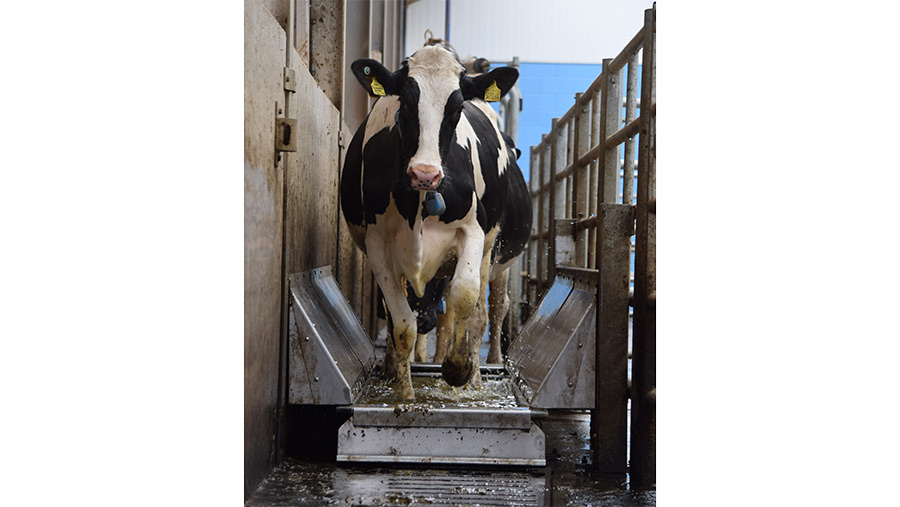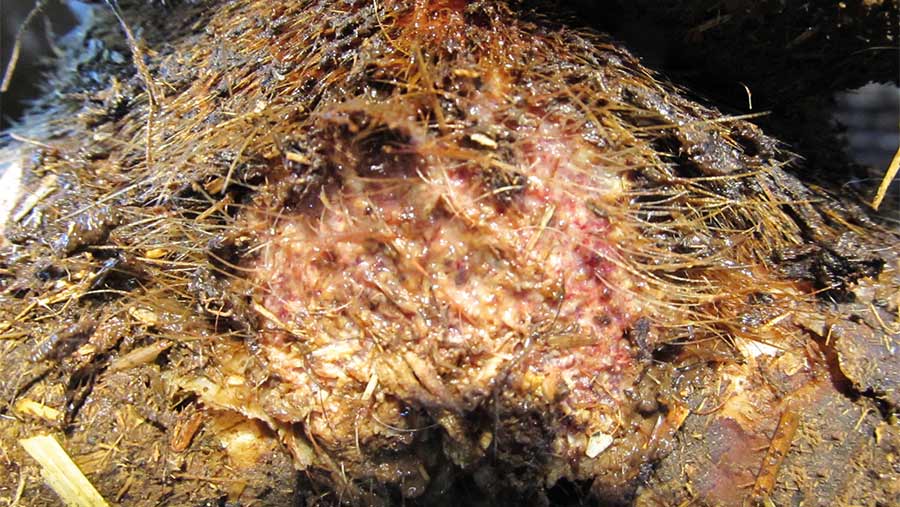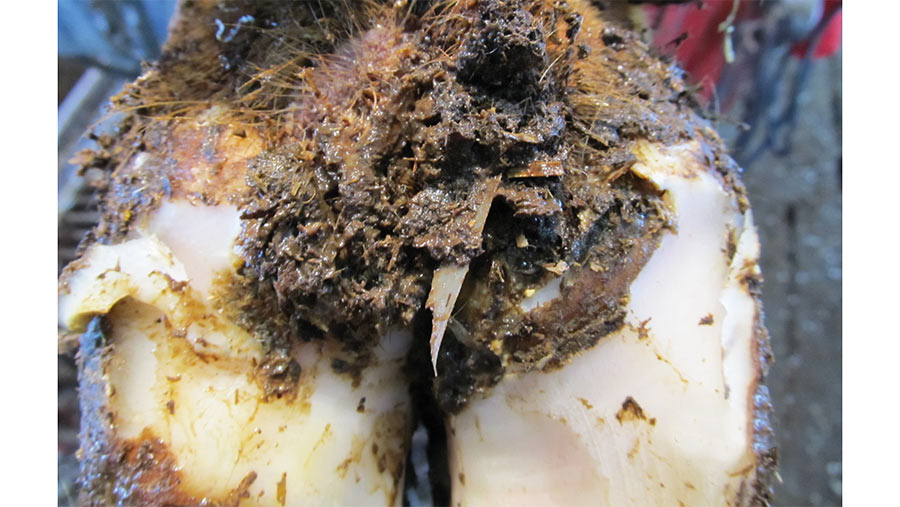Advertiser content
Simple steps to stamp out digital dermatitis in dairy herds
Provided by
Ceva Animal Health specialises in the research and development, production and marketing of pioneering animal health products in the ruminant, pig, poultry and pet sectors. For information visit www.ceva.co.uk.
Digital Dermatitis (DD) is a superficial, painful and contagious disease of the skin of the bovine foot caused by bacteria called treponemes.
Unfortunately, despite the farming industry making great strides to control the disease, most UK dairy herds are now considered to be affected, so there is still a lot that needs be done to reduce infection rates further.
Control is key
Biosecurity is vital as infected animals are the primary source of the spread of infection, although equipment (such as hoof knives) is also implicated.
Rough standing or poorly maintained tracks can lead to skin abrasions and then slurry, containing the bacteria, damages the skin further and allows the infection to be established, lead to further transmission through the herd.
- External biosecurity – external biosecurity keeps the bacteria (including potential new strains) out of the herd. New animals should be isolated, foot bathed regularly during the quarantine period and have their feet inspected. Any lesions identified should be treated carefully before introduction to the main herd, to reduce the risk of disease spread.
- Internal biosecurity – the aims of internal biosecurity are to minimise infection pressures from within the herd. Excellent hygiene and slurry management are important, alongside thorough cleansing of hoof knives between animals with a disinfection contact time of at least 20 seconds (remember to change the disinfectant regularly as too much contamination will prevent it being effective). The whole herd, including dry cows and heifers, must be considered when putting control plans in place. To prevent infection entering heifer groups, separate equipment and boot dips should be used by staff.
Foot bathing – foot bathing is a mainstay of both control and treatment for DD (and other foot lesions).
The foot bath location should permit good cow flow and the bath itself needs to have an appropriate depth and length, allowing the right frequency of contact.
Your vet can recommend the most appropriate biocide agent and concentration for your farm – remember to dispose of used and contaminated biocide bath liquid carefully.

Regular foot bathing, with steady cow flow through the bath, is important to reduce the impact of DD on farm © image supplied, with thanks, by Hoofcount
Treatment options
Identifying affected cows can be a challenge and, initially, accurate mobility scoring can help to find lame cows (with a lameness score of 2 or 3).
It is always best to treat cows as early as possible in the disease cycle to prevent any DD from becoming chronic. Ask your vet about mobility scoring training, if you feel this would be an advantage on your farm.
Once lame cows have been identified, examination of the area between the claws is important – most DD lesions are seen on the hind feet, so examination can be performed in the parlour with the aid of a bright light and a mirror to examine the interdigital space (spreading pliers can be useful).
Any cows showing evidence of lesions should be treated as soon as possible.

An acute ulcerated digital dermatitis lesion is a sign of active infection and must be treated quickly to prevent it becoming chronic

A chronic, thickened, ‘warty’ lesion is a sign that DD is widespread in the herd
Treatment of individual animals
It is important to follow a standard process to ensure all lesions are treated correctly:
- Lift and trim as necessary
- Clean the identified lesion(s) removing any scabs and surface discharge
- Dry the area and apply topical antibacterial spray, as advised by your vet
- Use an anti-inflammatory drug to reduce pain and speed up recovery
- Ensure the animal is regularly run through the foot bath and clean equipment carefully to reduce transmission of bacteria
The benefits of NSAIDs
A recent study supports the use of a zero milk with-hold anti-inflammatory drug (NSAID) for pain relief and anti-inflammatory activity in cows with active DD lesions.
During the study, all cows with an active DD lesion were treated with oxytetracycline spray, then one group had a single injection of a zero-milk with-hold anti-inflammatory drug (Ketofen®) whilst the control animals did not.
The results showed that lame animals at the time of diagnosis were 20 times less likely to be lame a week later if treated with the NSAID.
There was also a benefit in milk yield – on average, animals treated with a NSAID gave nearly 3kg more milk compared to non-treated cows, but the freshly calved cows, which were lame at diagnosis, gave over 10kg more compared to their non-treated counterparts!
Whole herd (‘blitz’) treatment can be used to reduce the number of active lesions and bacterial load; this is important as it can take a newly infected cow a while to develop a visible lesion.
For a blitz treatment, all cows (milking and dry) are examined and treated before management changes are implemented to maintain the reduction in infection following treatment.
Nick Bell MA, VetMB, PhD, PGCert Vet Ed, FHEA, DipECAWBM(AWSEL), MRCVS, veterinary surgeon and director of Herd Health Consultancy, comments:
“We’ve widely recognised the importance of NSAIDs for treating claw lesions, which are primarily inflammatory conditions, but this study is the first real insight into how important NSAIDs are for any lesion, including digital dermatitis, particularly if the cow is showing signs of lameness.
“This research provides a clear welfare justification for giving NSAIDs to dairy cows with active digital dermatitis lesions, with significant milk yield benefits.”
